Connect PC and servo drive
Install the INGENIA MotionLab3 software. You can download it here: Downloads.
This process also installs the necessary drivers.
Please use the contents menu below to choose the correct connection method for your drive:
Connect through Ethernet (CANopen drives)
In order to use Ethernet connection between the PC and the drive, we need to set the Network Card in the same subnet as the drive. Remember that the drive comes by default with IP 192.168.2.22. Please find a step-by-step guide on how to configure the Network Card here: Configuring adaptor for Ethernet connection.
Before starting
This tutorial assumes that you have connected your drive to an external DC power source inside the allowed voltage range and to an Ethernet cable between your computer and Port ECAT0 (if you do not know which port is ECAT0, please refer to the Connectors Guide section of the manual of your product).
Manual connection
If the drive was not detected or you want to adjust the connection parameters for some other reason, you can connect to your drive manually following these steps:
Open MotionLab3 and press the Add slave manually button:

Select the communication protocol you would like to use from the dropdown (in this case Ethernet - Not valid for EtherCAT devices):
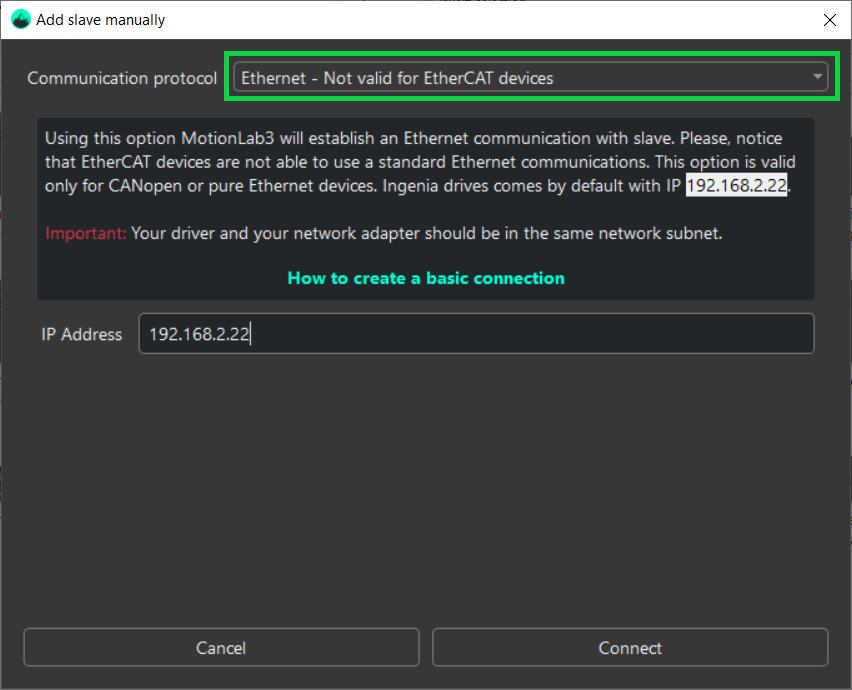
Enter the IP 192.168.2.22:
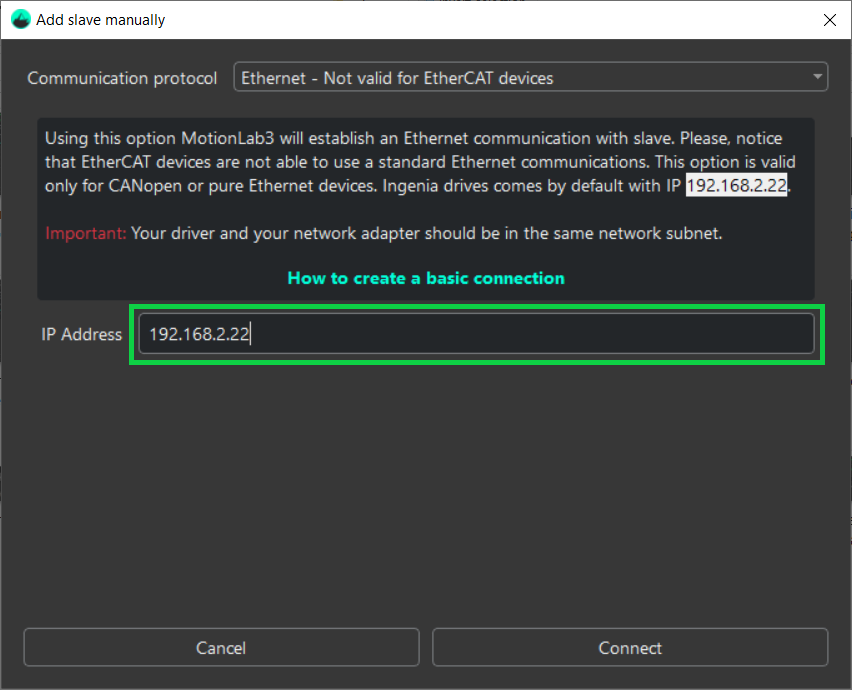
Important
Your driver and your network adapter should be in the same network subnet.
Press the Connect button:

MotionLab3 will now connect you to the drive:

Connect through CANopen (CANopen drives)
Automatic connection
Upon opening, MotionLab3 will scan the network and attempt to automatically detect your drive which makes connecting to it as simple as pressing a button.
If a drive was found, it would be displayed in the main window:
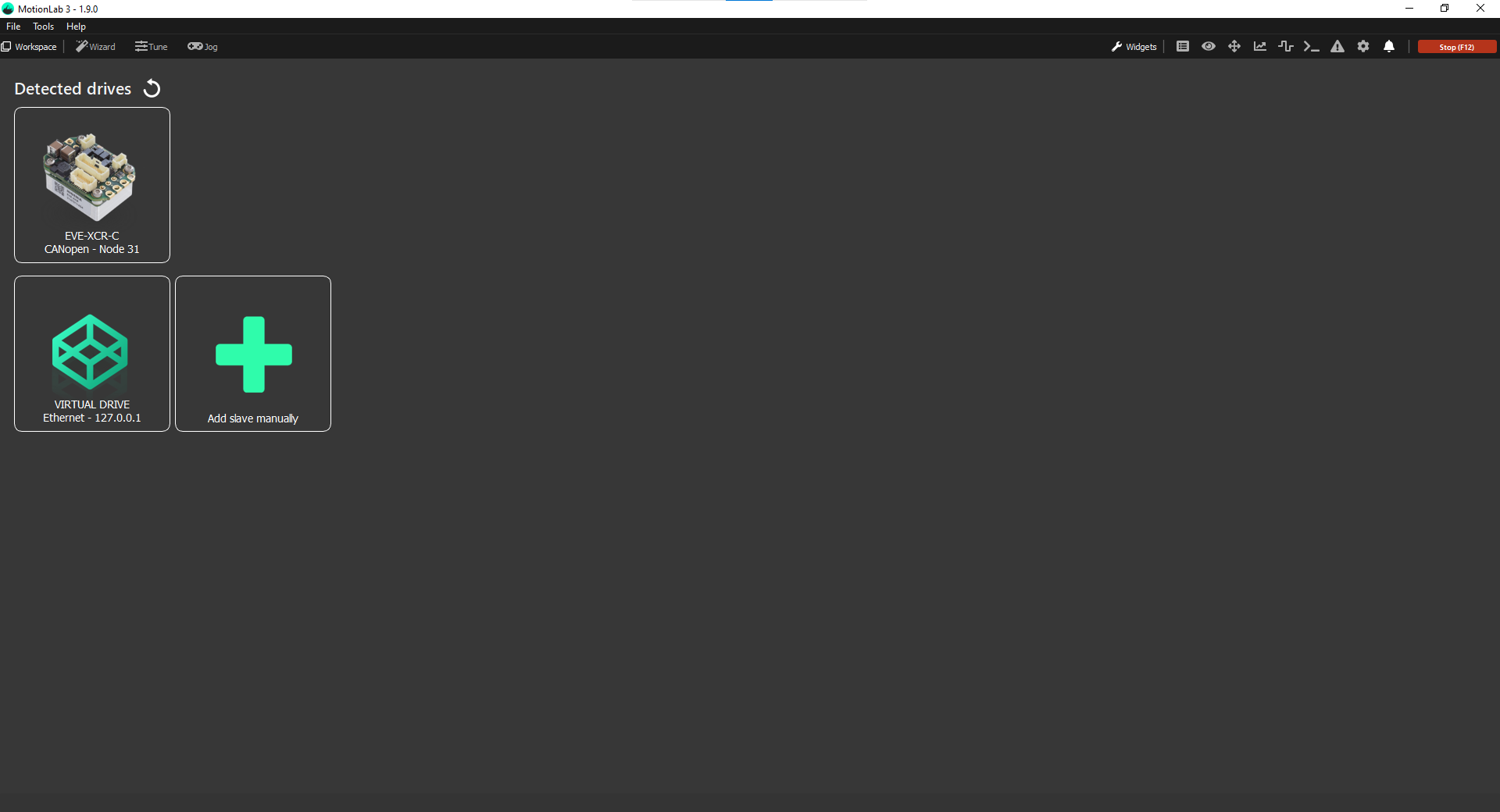
Hover the drive and press the Connect button to make the connection:

You can press the refresh button ( ) to manually trigger another network scan if the drive was connected after MotionLab3 was launched.
) to manually trigger another network scan if the drive was connected after MotionLab3 was launched.
Manual connection
If the drive was not detected or you want to adjust the connection parameters for some other reason, you can connect to your drive manually following these steps:
Open MotionLab3 and press the Add slave manually button:
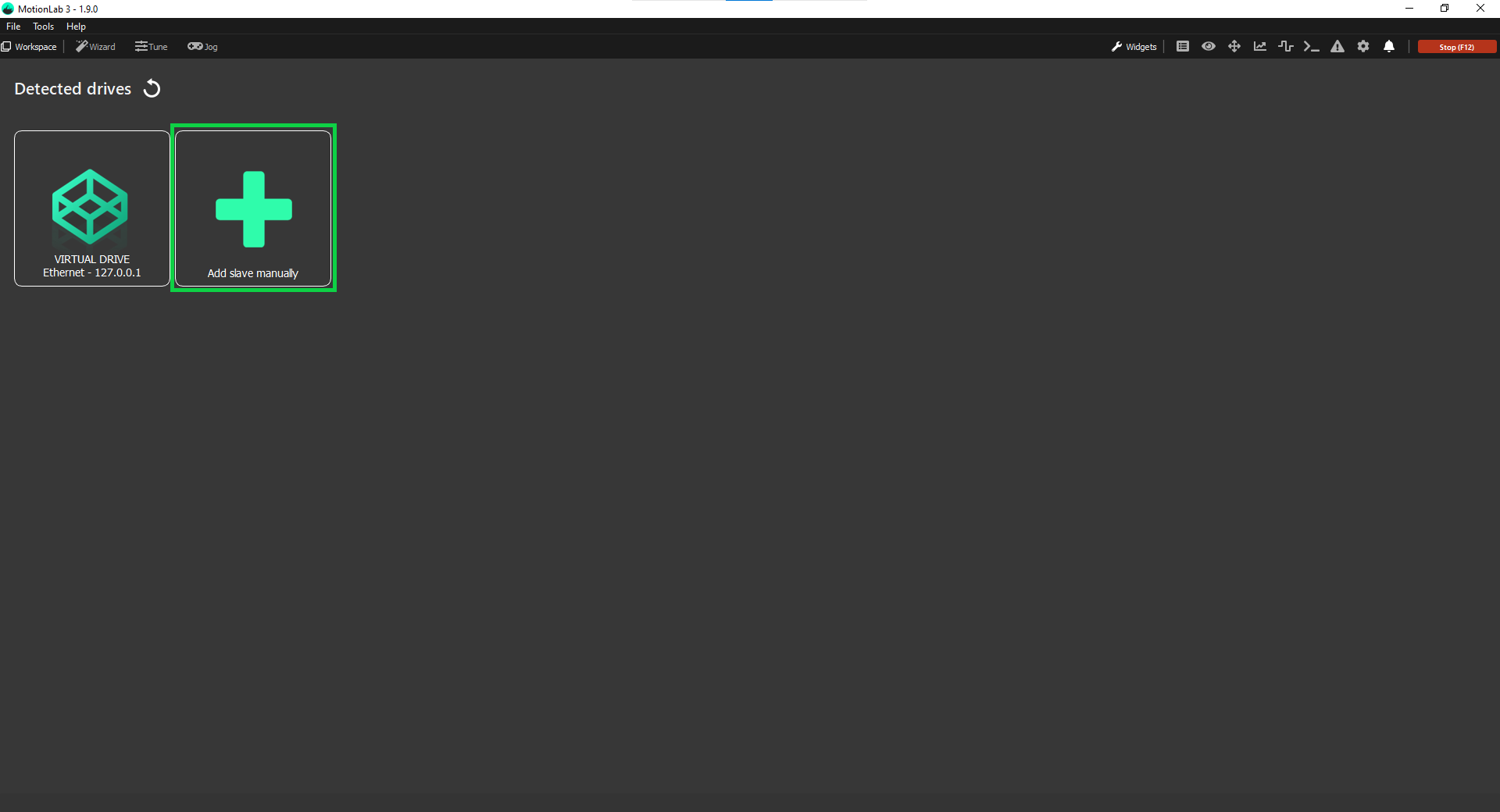
Select the communication protocol you would like to use from the dropdown (in this case CANopen):

Adjust the connection parameters:

Scan for the slave in the network or manually enter its ID:

Press the Connect button:

MotionLab3 will now connect you to the drive:

Connect through EtherCAT (EtherCAT drives)
Connect through EtherCAT using CoE
In order to use Ethernet connection between the PC and the Driver you need to set the Network Card in the same subnet than the Driver. Remember that the Driver comes by default with IP 192.168.2.22. Please find a step by step guide on how to configure the Network Card here: Configuring adaptor for Ethernet connection
Automatic connection
Upon opening, MotionLab3 will scan the network and attempt to automatically detect your drive which makes connecting to it as simple as pressing a button.
If a drive was found, it will be displayed in the main window:

Hover the drive and press the Connect button to make the connection:

You can press the refresh button ( ) to manually trigger another network scan if the drive was connected after MotionLab3 was launched.
) to manually trigger another network scan if the drive was connected after MotionLab3 was launched.
Manual connection
If the drive was not detected or you want to adjust the connection parameters for some other reason, you can connect to your drive manually following these steps:
Open MotionLab3 and press the Add slave manually button:

Select the communication protocol you would like to use from the dropdown (in this case EtherCAT CoE):

Select the Network adapter you would like to use. The Reload button can be used to check if the available adapters have changed since MotionLab3 was launched:

Important
Your driver and your network adapter should be in the same network subnet.
Press Scan - ECat drives connected to the target adapter will be detected. You can also manually enter the Slave ID if you wish:

Press the Connect button:
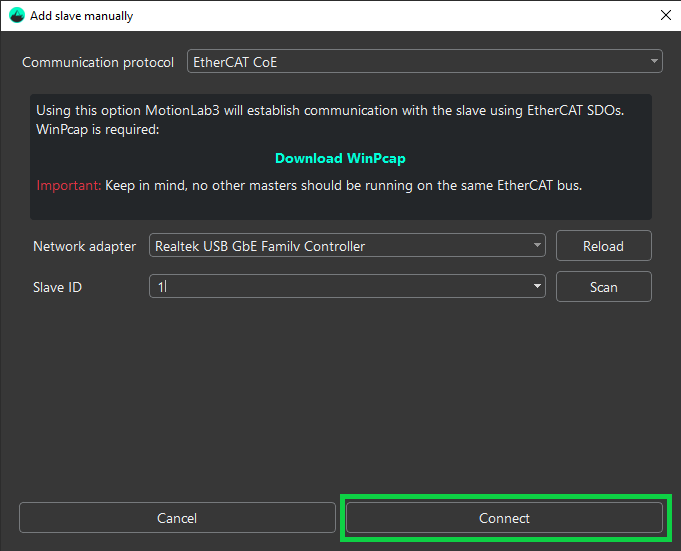
MotionLab3 will now connect you to the drive:

Connect through EtherCAT using the EoE Service (BETA)
In order to use Ethernet connection between the PC and the Driver you need to set the Network Card in the same subnet than the Driver. Remember that the Driver comes by default with IP 192.168.2.22. Please find a step by step guide on how to configure the Network Card here: Configuring adaptor for Ethernet connection
This is an advanced mode of connecting via EtherCAT that requires more setup and additional steps. For a simple way to make a connection, refer to the page on how to connect via CoE.
Beta version
This is a feature still under development that could include some potential issues.
Posible problems when connecting through EoE service
Make sure that the EoE service has administrative privileges.
Check that the interface network adapter that you are selecting is the correct one.
You don't need to configure a static IP for the interface network adapter that you will use to connect to your slaves.
Make sure that you don't have any EtherCAT master running in your PC (TwinCAT, Accontis...).
WinPCap should be installed before using the EoE service.
Another software, like some anti-virus, could block communications, we recommend using Windows Task Manager in order to find suspicious processes that could block them.
Open MotionLab3 and press the Add slave manually button:

Select the communication protocol you would like to use from the dropdown (in this case EtherCAT EoE (using EoE service) - Beta):

Press the Run EoE Service button. If the EoE Service is already running skip this step and go to step 6.

A pop-up asking for admin privileges will appear. Fill it with the credentials if necessary, and press Yes.

The EoE Service will start in a new window.
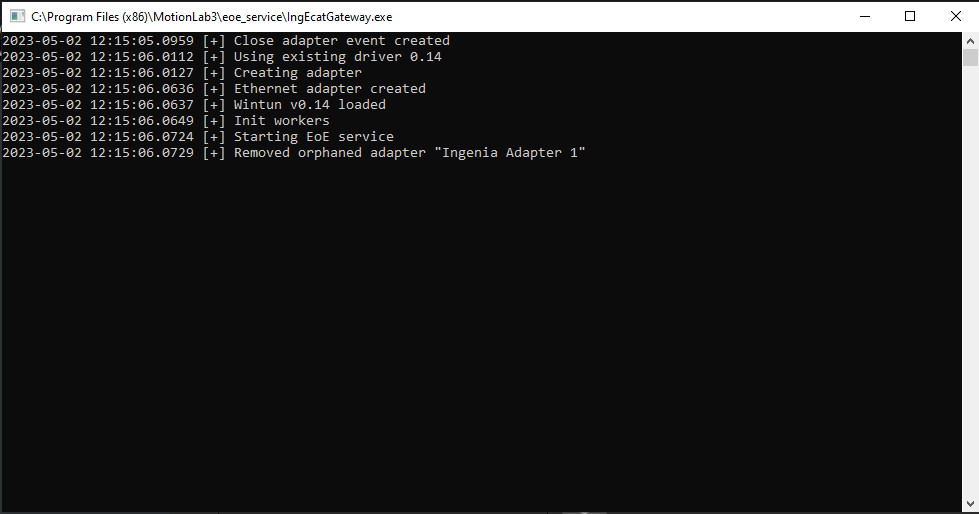
The EoE Service is independent of ML3, if ML3 closes, EoE Service will keep running.
Return to MotionLab3 and select the Network adapter you would like to use. The Reload button can be used to check if the available adapters have changed since MotionLab3 was launched.

Press Scan - ECat drives connected to the target adapter will be detected. You can also manually enter the Slave ID if you wish.

Press the Connect button:

MotionLab3 will now connect you to the drive:

